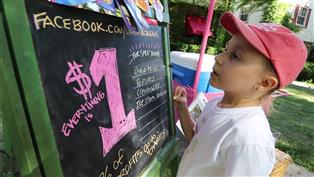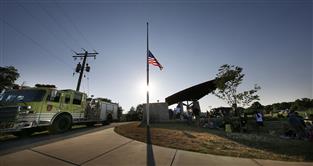Monarch supporters make a pitch for milkweed in Wauwatosa
The Wauwatosa School Board got a lesson in butterfly populations and heard a plea for help from Friends of the Monarch Trail co-founders Barb Agnew and Jim Price this week.
School Board President Michael Meier said he would seek advice from within the district about what kind of program might work, serving both butterflies and education.
The chief outcome of a program involving the district might be planting flowering plants and milkweed.
Monarchs eat almost exclusively the nectar of flowering plants, Price said, and lay eggs only on milkweed plants. The larvae of monarchs — caterpillars — eat only milkweed.
The loss of prairie to development and expanding cropland, chiefly for corn production, has had a devastating effect on the monarch population. On the County Grounds near the Eschweiler Buildings, typically a summer home for monarchs, only a handful were observed this year, Agnew said.
The development of the County Grounds has changed butterfly habitat, despite a butterfly preserve at Innovation Campus. But the loss locally is also a microcosm of what's happening globally.
Wintering sites in Mexico, measured in area occupied, were at nearly 21 hectares — about 51 acres — in 1996-97. In the current winter, it's about 1.6 acres, Price said. The monarch butterfly is on the brink of extinction, he said.
Agnew said some progress has been made by working with the Wisconsin Department of Transportation on improving connectivity of parcels and developing a pilot project for "butterfly-friendly" landscaping. Involving the schools would be another step in improving prospects for the monarch.
A rain garden was created at Jefferson Elementary School in 2004, but Price said that while developing a monarch waystation is inexpensive, it takes work to keep them up.
Agnew said monarch raising and cultivation in classrooms has proved engaging, especially for younger students, and that it could be enriching for older kids as part of a STEM program, which emphasizes science, technology, engineering and math.
Population studies, environmental analysis, field work and monitoring all call on such skills.
More from News and Features
- Anodyne Coffee plans to open location in Wauwatosa Village
- Wauwatosa Meetings: Aug. 4
- Video: Wauwatosa girl's curbside ice cream stand raises money for the hungry
- Wauwatosa News and Notes: Hands-only CPR training offered; Firefly Art Fair is Aug. 6-7
- Wauwatosa Ask Now: Why are there barriers and fencing along the North Avenue bridges over the Menomonee River?
- Mystery Photo Contest: July 28
- Wauwatosa gears up for National Night Out event, this year at the zoo
- Election 2016: Wisconsin's 4th District candidates weigh in
- Wauwatosa's Luther Manor residents share smiles through flower delivery
- Wauwatosa Police Report: July 17-23















